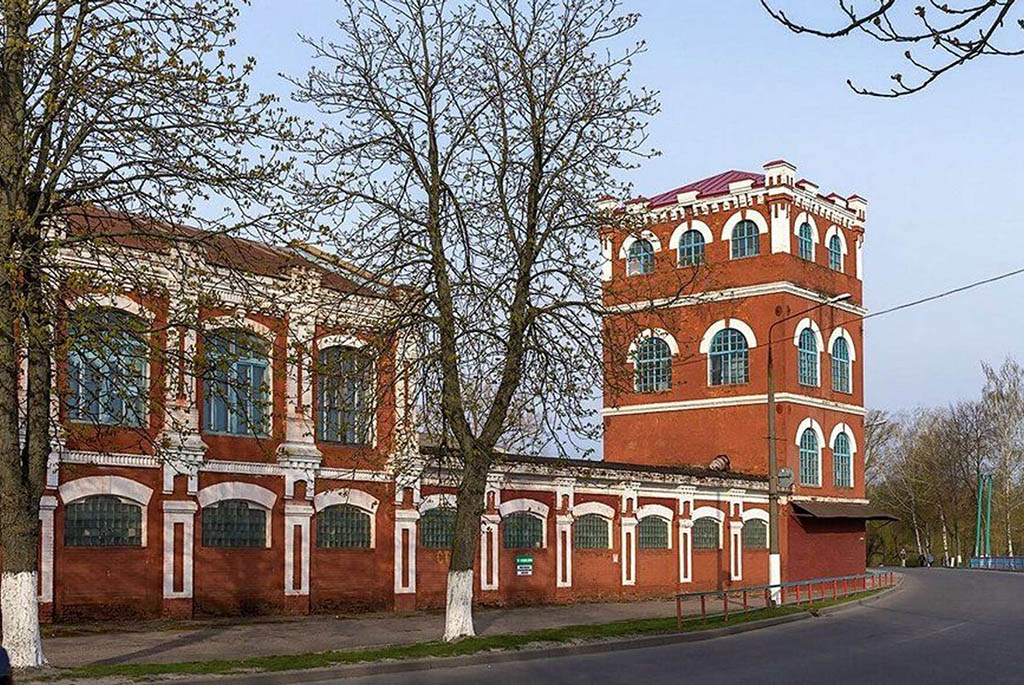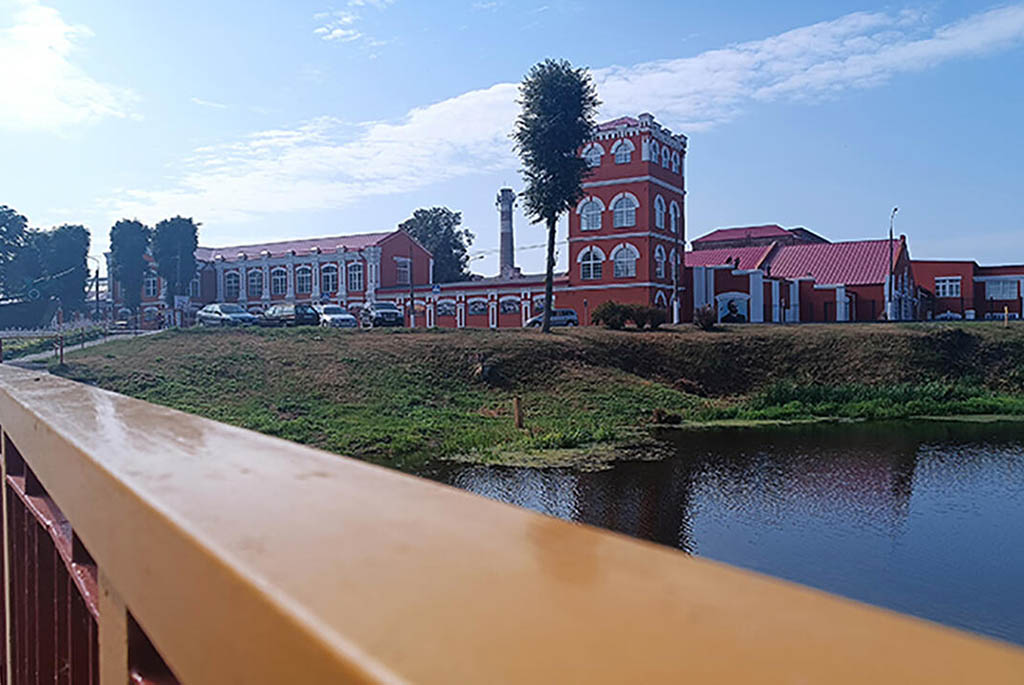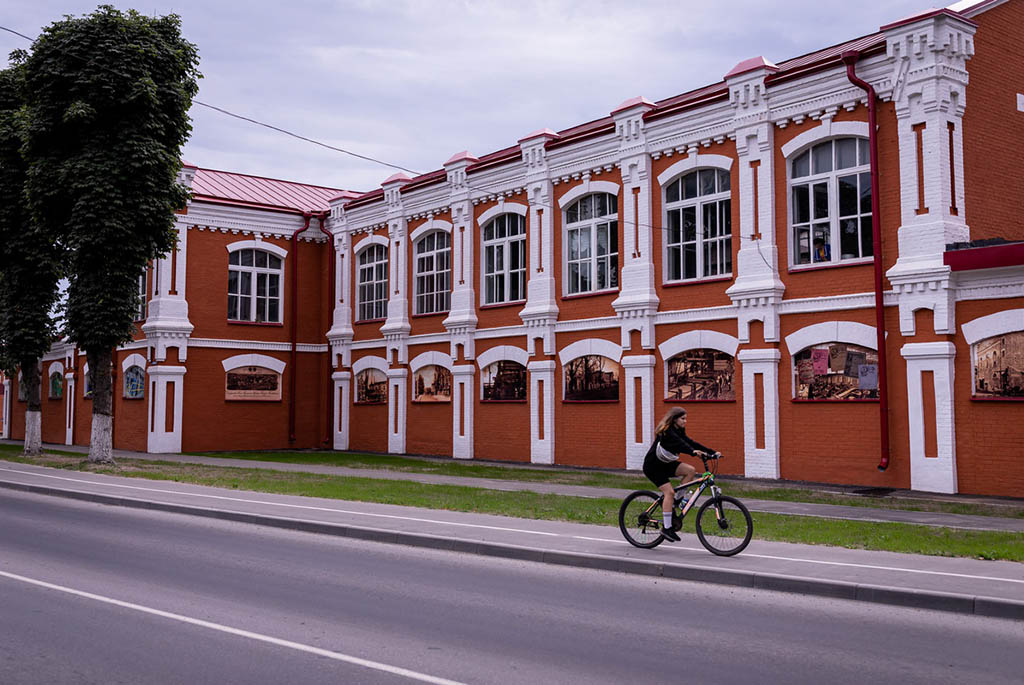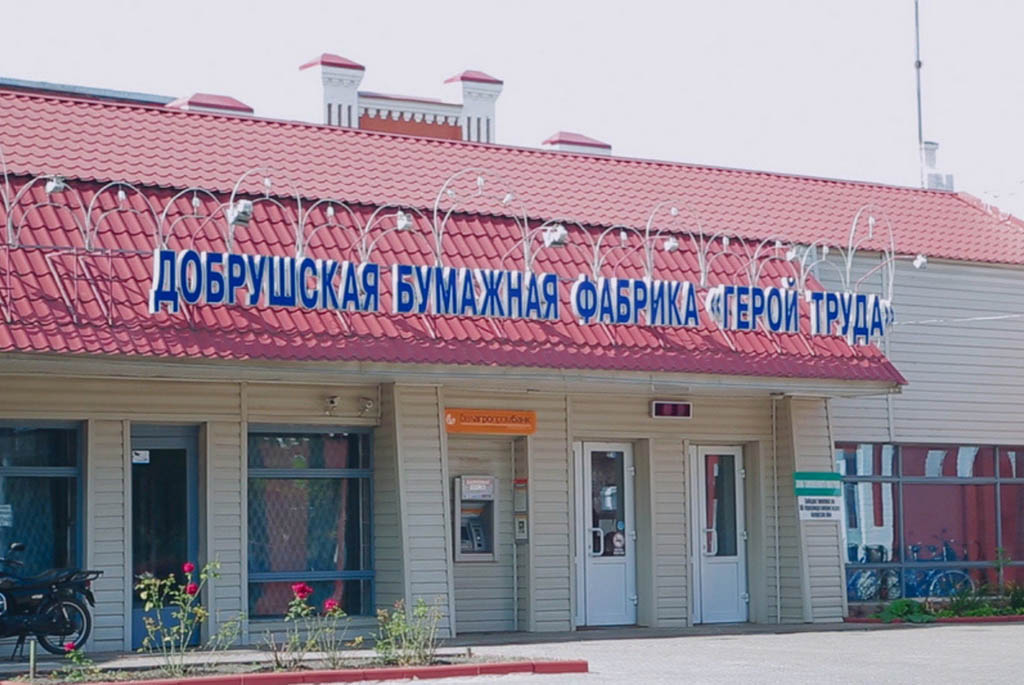The idea of establishing the mill belonged to Ivan Paskevich, a Russian military leader and owner of a large estate in Gomel. However, the mill was opened after Paskevich's death by his son, Fedor. The mill began operations in 1870 and by the early 20th century, it became one of the largest paper producers in the Russian Empire. It produced printing, newspaper, wrapping, and writing paper. Over time, simple papermaking machines were replaced with advanced European equipment. In 1882, the first chemical laboratory in Belarus was established here, and seven years later, the first power station. The mill was electrified and equipped with telegraph and telephone connections.
The products of the Dobrush enterprise were displayed at industrial exhibitions, successfully exported throughout the country, and highly rated by experts. The mill was twice granted the privileged right to print the coat of arms of the Russian Empire on its products. In 1910, under new manager A. Stulginsky, a vocational school was opened at the mill to train carpenters, textile workers, and bookbinders. The new manager introduced an eight-hour workday, believing it would increase worker efficiency.
In the early 1930s, the production was modernized. The installation of stationary cooking boilers increased production. Thanks to the paper industry, Dobrush grew from a small settlement into an industrial town. A large part of the town's residents worked at the mill. The factory also established a school, kindergarten, hospital, dining halls, library, pharmacy, club, and gymnasium.
During the Great Patriotic War, paper production in Dobrush declined, only reaching pre-war levels in the early 1950s. The next modernization benefited the mill. It produced large volumes of drafting and drawing paper and supplied practically the entire Soviet Union with school notebooks. Every seventh Soviet student used notebooks from the Dobrush mill.
Today, the complex of factory buildings in Dobrush is a monument of 19th-century industrial architecture. The brick buildings, built in the styles of Modernism and Neo-Gothic, are protected by the state as a historical and cultural value. The paper industrial complex continues to operate successfully, supplying products to both domestic and foreign markets. In Dobrush, they still produce notebooks, notepads, wrapping paper, calendars, cardboard, cellulose fabric, and wallpaper.
At the mill, in the building of the former school opened by Irina Paskevich for workers' children in 1909, there is a museum. Guided tours are available by appointment. In the museum, visitors can learn how paper is made, familiarize themselves with the history of the mill and Dobrush itself. The factory complex is located in the central part of the city, on the banks of the Iput River. There are buses, minibuses, and electric trains from Gomel to Dobrush.





